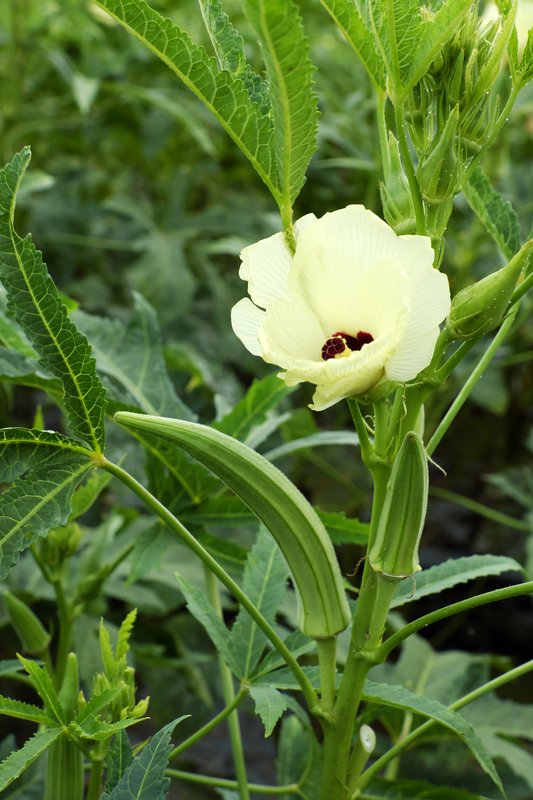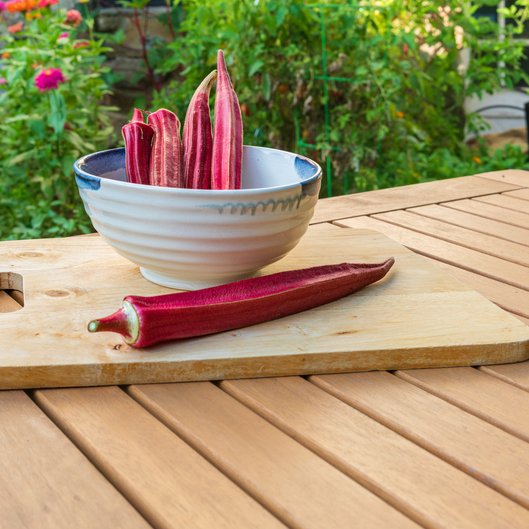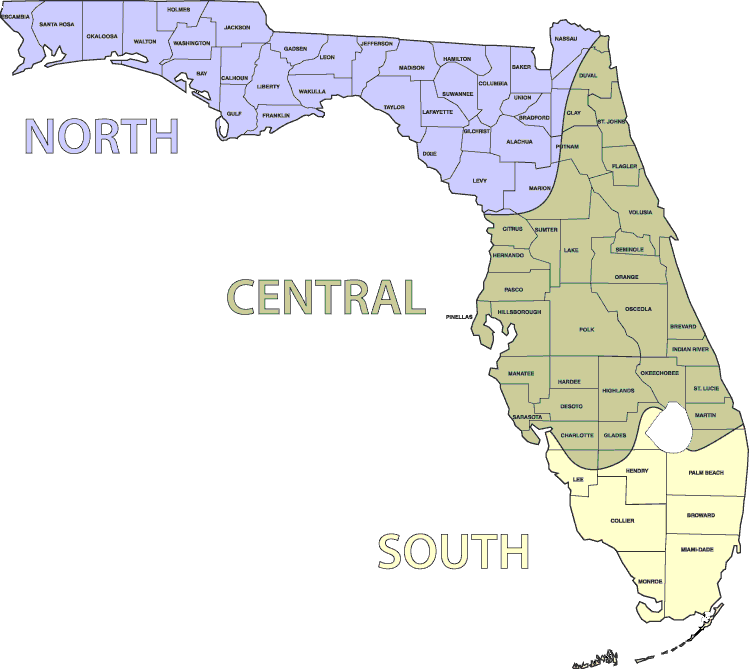Okra Varieties for Florida
Okra, with its tall, graceful stems and striking, hibiscus-like flowers, adds a touch of elegance and productivity to any garden. Known for its distinctive, ridged pods, okra is a warm-season vegetable that thrives in hot climates. The plants can grow quite tall, creating a beautiful backdrop in garden beds or a charming addition to containers.
In Florida planting zone 9, okra thrives during the warm months, producing an abundance of tender pods that are perfect for a variety of dishes. The plants bloom with beautiful yellow flowers that give way to the elongated, green pods. Watching these vibrant plants grow and produce is a delightful experience, marking the success of your gardening efforts.
For those new to gardening, okra is an excellent choice. It is relatively easy to grow and offers a prolific harvest of nutritious pods. Whether you enjoy them fried, pickled, or in gumbo, okra brings a unique and flavorful addition to your meals, making your gardening endeavors both enjoyable and fruitful.
I would give okra a 4 out of 5 on how easy it is to grow. It is relatively straightforward to cultivate and can handle heat well, making it suitable for both beginners and experienced gardeners.
Clemson Spineless
Heirloom

Description: Clemson Spineless is the most popular okra variety, known for its smooth, spineless pods and high yields. The pods are tender and flavorful, reaching 6-9 inches in length.
Growing Season: Spring, Summer, and Fall
USDA Planting Zone: 3-11
Special Notes: Heat-tolerant and resistant to many common okra diseases. Excellent for frying, pickling, and adding to soups and stews. Matures in about 56-60 days.
Jing Orange
Heirloom

Description: Jing Orange is a striking variety with deep red to orange pods and green leaves. It has a unique, slightly sweet flavor and tender texture.
Growing Season: Spring, Summer, and Fall
USDA Planting Zone: 3-11
Special Notes: Adds color to the garden and dishes. Heat-tolerant and productive. Matures in about 60-65 days.
Red Burgundy
Heirloom

Description: Red Burgundy okra produces deep red pods and green leaves with red veins. The pods are tender and have a mild flavor.
Growing Season: Spring, Summer, and Fall
USDA Planting Zone: 3-11
Special Notes: Adds visual interest to the garden and dishes. Heat-tolerant and high-yielding. Matures in about 55-60 days.
Annie Oakley II
Hybrid

Description: Annie Oakley II is a hybrid okra variety known for its early maturity and high yields. It produces spineless, dark green pods that are tender and flavorful.
Growing Season: Spring, Summer, and Fall
USDA Planting Zone: 3-11
Special Notes: Compact plants are ideal for small gardens. Excellent for fresh eating, frying, and pickling. Matures in about 52-55 days.
Emerald
Heirloom

Description: Emerald okra produces dark green, smooth, and tender pods. It is known for its excellent flavor and high yields.
Growing Season: Spring, Summer, and Fall
USDA Planting Zone: 3-11
Special Notes: Heat-tolerant and resistant to common okra diseases. Great for fresh use, frying, and pickling. Matures in about 55-60 days.
Louisiana Green Velvet
Heirloom

Description: Louisiana Green Velvet is a traditional variety with large, bright green pods and vigorous growth. The pods are tender and flavorful.
Growing Season: Spring, Summer, and Fall
USDA Planting Zone: 3-11
Special Notes: Very productive and heat-tolerant. Ideal for fresh eating, cooking, and freezing. Matures in about 55-60 days.
Florida Vegetable Planting Guide
This guide provides information on when to start seeds inside, direct seed, and transplant starter plants in the different regions of Florida.
North USDA Planting Zones: 8b-9a
Central USDA Planting Zones: 9b & some of 10a
South USDA Planting Zones: 10a-11b
Visit the U.S. National Arboretum for an Exact USDA Planting Zone Map.

| Okra | North Florida | Central Florida | South Florida |
|---|---|---|---|
| Start Seeds Inside | Not recommended | Not recommended | Not recommended |
| Direct Seed | Mar-Jun | Feb-Aug | Jan-Mar & Aug-Oct |
| Transplant Starter Plants | Apr-Jun | Mar-Aug | Feb-Mar & Sep-Oct |
Explanation:
Start Seeds Inside: Starting okra seeds indoors is not recommended because okra thrives when directly sown into warm soil and transplants can sometimes struggle to establish.
Direct Seed: Direct seeding okra during the warmer months allows for quick germination and rapid growth, taking advantage of the long growing season.
Transplant Starter Plants: Transplanting okra starter plants during the warmer months helps them establish quickly in the garden, leading to a productive harvest.
Soak seeds in water for 6 hours for better germination. Requires warm soils and temperatures. Very heat tolerant.
________________________________________________________________________________________________________________________
Soil: Okra prefers well-drained, fertile soil with a pH between 6.0 and 6.8. Amend the soil with compost or well-rotted manure to improve fertility and structure.
Sun: Full sun is essential for optimal growth and fruit production. Ensure okra plants receive at least 6-8 hours of sunlight daily.
Watering: Keep the soil consistently moist but not waterlogged. Mulching helps retain soil moisture and regulate temperature.
Spacing: Plant okra seeds .5-1 inch deep, spacing them 4-10 inches apart in rows and space rows 36 inches apart. Thin seedlings to the same spacing to allow adequate air circulation and room for growth.
Fertilization:
N-P-K Ratio: Okra benefits from a fertilizer with a higher nitrogen content to support leafy growth and pod development, such as 20-10-10 or 16-8-8.When to Add:
Before Planting: Apply the fertilizer to the soil before planting seeds or transplants to promote strong initial growth.
Mid-Growing Season: Reapply the fertilizer every 4-6 weeks during the growing season to support continued growth and pod production.
Application Tips:
Follow the directions on the fertilizer package to avoid over-fertilization.
Apply the fertilizer evenly around the base of the plants and water thoroughly to help the nutrients reach the roots.
Additional Tips:
Okra grows best in well-drained soil rich in organic matter, so consider adding compost to improve soil fertility and structure.
Mulch around the plants to help retain moisture, suppress weeds, and regulate soil temperature.
Ensure that okra receives consistent moisture, especially during flowering and pod formation, to prevent stress and promote even growth.
Blog post on Natural Fertilizers
Support: Some okra varieties may benefit from staking or support, especially in windy conditions.
Harvest: Okra is ready to harvest when the pods are 2-4 inches long, typically 60-70 days after planting. Harvest by cutting or snapping the pods off the plant while they are still tender.
By selecting the right okra varieties and following these growing tips, you can achieve a successful and bountiful okra harvest in your Florida garden.
Pests and Diseases that affect Okra in Florida:
Aphids: Small insects that suck sap from the leaves and stems, causing curling and yellowing.
Spider Mites: Tiny mites that cause stippling and yellowing of the leaves.
Flea Beetles: Small beetles that chew small holes in the leaves.
Root-Knot Nematodes: Microscopic worms that cause galls on the roots, stunting plant growth.
Natural Pest Control
Powdery Mildew: A fungal disease that causes a white, powdery coating on the leaves.
Southern Blight: A fungal disease that causes wilting and death of the plant.
Companion Plants
Basil
Description: Basil is a fragrant herb with bright green leaves and a sweet, slightly peppery flavor.
Growing Season: Spring through summer
USDA Planting Zone: 4-10
Special Notes: Prefers full sun and regular watering.
How it Helps: Basil helps repel aphids, spider mites, and flea beetles with its strong aroma. It also attracts beneficial insects like bees that help with pollination.
Nasturtium
Description: Nasturtiums are flowering plants with round leaves and vibrant flowers in shades of yellow, orange, and red.
Growing Season: Spring to fall
USDA Planting Zone: 4-8
Special Notes: Known for their ability to trap pests and attract beneficial insects.
How it Helps: Nasturtiums act as a trap crop, luring aphids and flea beetles away from okra. Their flowers also attract beneficial insects that prey on these pests.
Marigold
Description: Marigolds are bright, sunny flowers that come in a variety of colors including yellow, orange, and red.
Growing Season: Spring through fall
USDA Planting Zone: 2-11
Special Notes: Marigolds release chemicals in the soil that deter nematodes and other soil-borne pests.
How it Helps: Marigolds help repel nematodes, aphids, and flea beetles. Their roots release a substance that helps prevent root-knot nematodes, protecting okra roots.
Dill
Description: Dill is an herb with feathery green leaves and yellow flowers, known for its use in pickling.
Growing Season: Spring to early summer
USDA Planting Zone: 2-11
Special Notes: Dill prefers full sun and well-drained soil.
How it Helps: Dill attracts beneficial insects such as ladybugs and predatory wasps that prey on aphids, spider mites, and flea beetles. It also helps improve the health of surrounding plants by enhancing their growth.
Cilantro
Description: Cilantro is an herb with bright green leaves and a distinct, fresh flavor.
Growing Season: Fall and spring
USDA Planting Zone: 3-11
Special Notes: Prefers full sun to partial shade and well-drained soil.
How it Helps: Cilantro helps repel aphids, spider mites, and other pests with its strong aroma. It also attracts beneficial insects that help control pest populations.
These companion plants help protect okra from pests and diseases while also enhancing the overall health and productivity of the garden.
For okra, here are the vegetable plants that should not be planted nearby:
Cucumbers - Can attract pests that affect okra.
Melons - Compete for nutrients and can attract similar pests.
Potatoes - Can spread diseases and compete for nutrients with okra.
Eggplant - Competes for nutrients and can attract similar pests.
